Appomattox Court House > Village of Appomattox Court House
Lee and Grant met to discuss the surrender in McLean House, a handsome private home a short distance south of the court house. It was the home of Wilmer and Virginia McLean, who had moved to Appomattox Court House in 1862 from Manassas, Virginia. Their home there had served as the headquarters for Confederate General P. G. T. Beauregard during the first Battle of Bull Run, during which an artillery shell had crashed through their fireplace. The McLeans moved the 120 miles south to Appomattox in the hopes of escaping future fighting, and so that Wilmer would be better able to work as a sugar broker for the Confederate army. Wilmer afterwards commented, “The war began in my front yard and ended in my front parlor.”
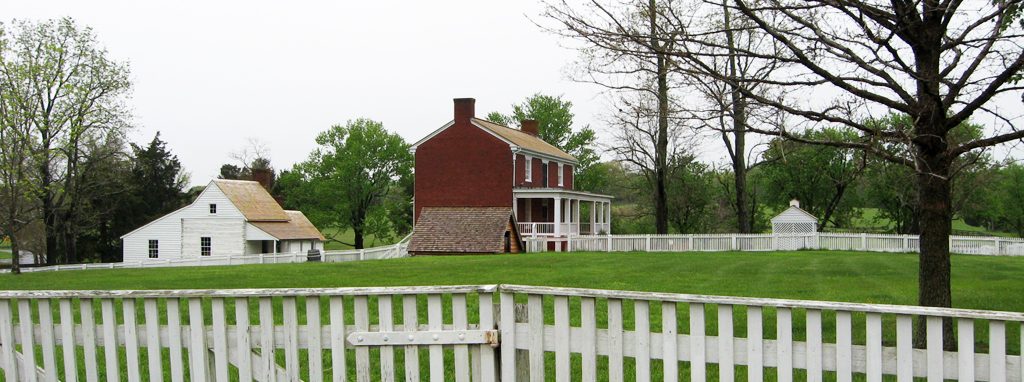
From the marker on the fence in front of McLean House:
McLean House
At midday on April 9, 1865, General Robert E. Lee rode into this yard, dismounted, and disappeared into the McLean House.Grant, surrounded by generals and staff officers, soon followed. Dozens of officers, horses, and onlookers waited outside. After 90 minutes, Lee and Grant emerged. To the silent salutes of Union officers, Lee rode back through the village – to his defeated army.
The home that hosted the surrender meeting was one of the best in Appomattox. Built in 1848, it had since 1862 been owned by businessman Wilmer McLean. The house became a sensation after the surrender. Union officers took some mementos, and in 1893 it was dismantled for display in Washington, D.C. but that display never happened, and the National Park Service reconstructed the building on its original site in the 1940s.
From the caption at the upper left:
This sketch by freelance artist Eustace Collett was made in April 1865. The building at left – no longer standing – was at that time an abandoned tavern.
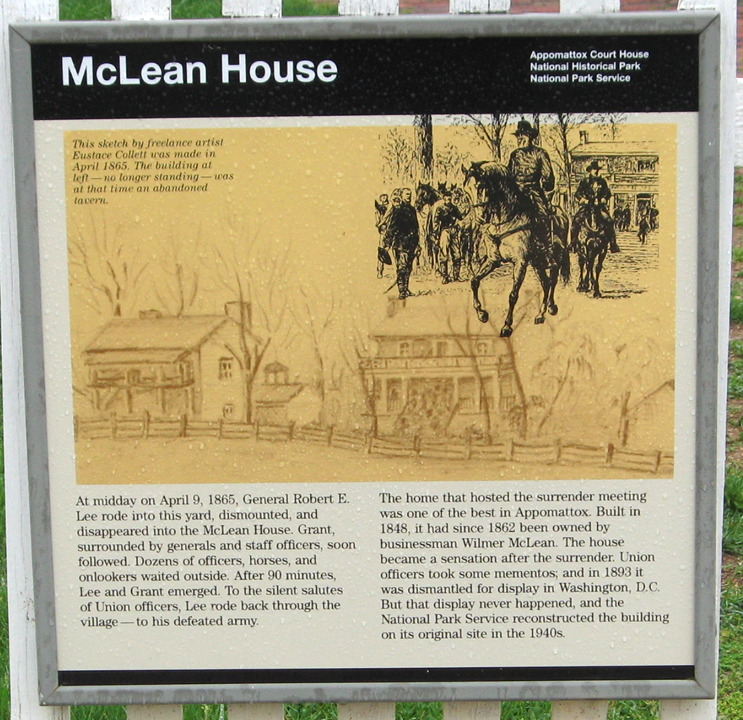

Behind the main house. The stairs to the rear entrance of the main house are on the left. The building in the center is the kitchen. The small building to the right is the slave quarters.
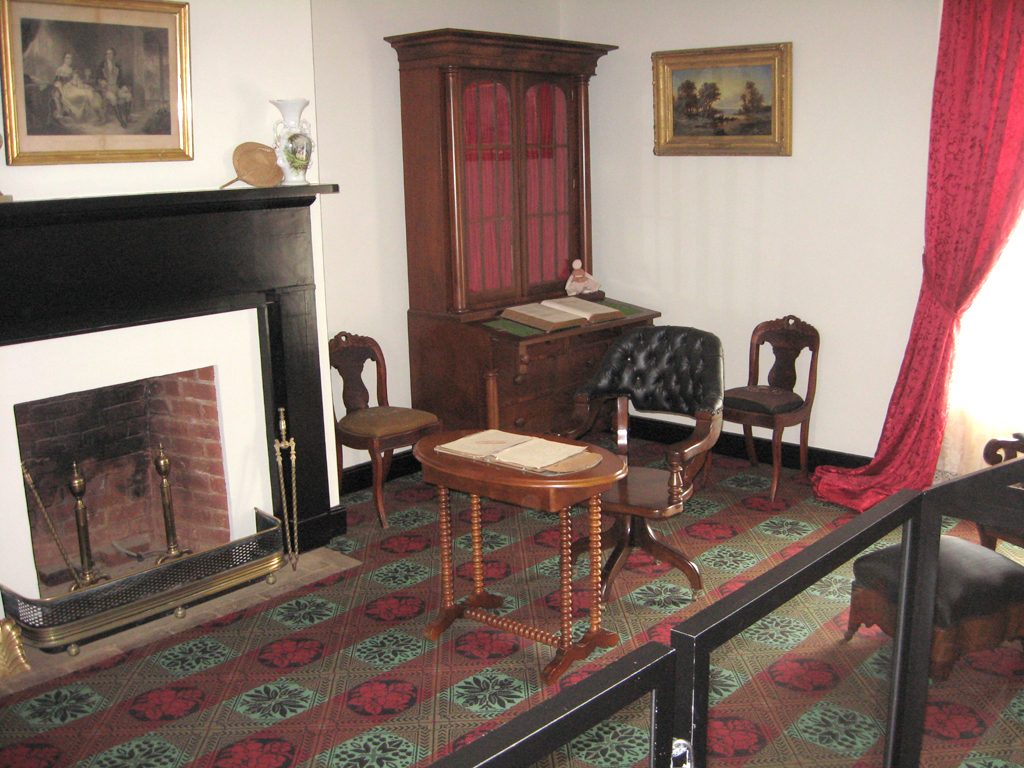
Replica of the wooden table where Grant composed the surrender terms. Philip Sheridan gave McLean $20 in gold for the original table and asked George Custer to carry it away on his horse. He later gave the table to Custer’s wife, who then left the table to the United States government in her will. It is now at the American History Museum at the Smithsonian.
The surrender took place in the parlor, which has been meticulously restored. All of its furnishings had been taken as souvenirs after the surrender by Union officers, who simply shoved money into the protesting McLean’s hands as they carried off his possessions.

Replica of the marble-topped table where Lee read and signed the surrender terms. Major General Edward Ord gave McLean $40 in gold for the table, which is now in the Chicago History Museum.
McLean had made a great deal of money during the war running sugar through the Union blockade, but it was all in now-worthless Confederate currency. He tried to raise money selling photos of his famous home, but was unsuccessful. Unable to maintain the payments and upkeep on the house, the McLeans moved out in 1867 and returned to Manassas. They then moved to Alexandria, where Wilmer worked for the Internal Revenue Service.
The McLean House was sold at auction by the bank in 1869 for $1,250. In 1891 it was sold to an investor from New York. His original plans were to dismantle it and move it to be displayed at the Columban Exposition in Chicago in 1893. Nothing came of this, so plans were made to move the house to Washington D.C. for display in a Civil War museum. Architects made detailed drawings and lists of materials and the house was dismantled and packed for shipping. But funds ran out, legal problems arose, and the plans and the house were abandoned.
Appomattox Court House National Historical Monument was created in 1940, and work began to rebuild the house using the plans and as much of the original material as could be salvaged. Over 5,000 bricks were able to be reused. But work was almost immediately halted in December of 1941 as America entered the Second World War. It resumed in 1947, and the restored house was reopened on April 9, 1949. The dedication ceremony on April 16, 1950 saw the ceremonial ribbon cut by Major General Ulysses S. Grant III and Robert E. Lee IV after a speech by Lee biographer and historian Douglas Southall Freeman.
Today the restored McLean House is open to the public as the main attraction in Appomattox Court House Village, part of Appomattox Court House National Historical Park.

Dining room of the McLean House
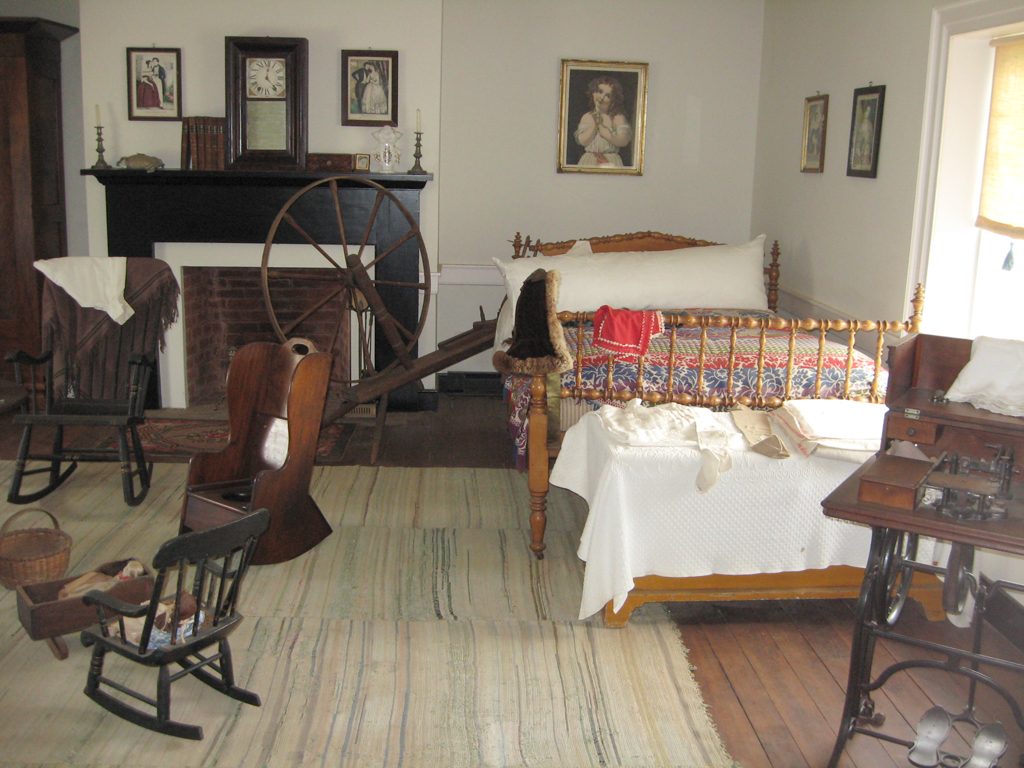
Upstairs bedroom in the McLean House
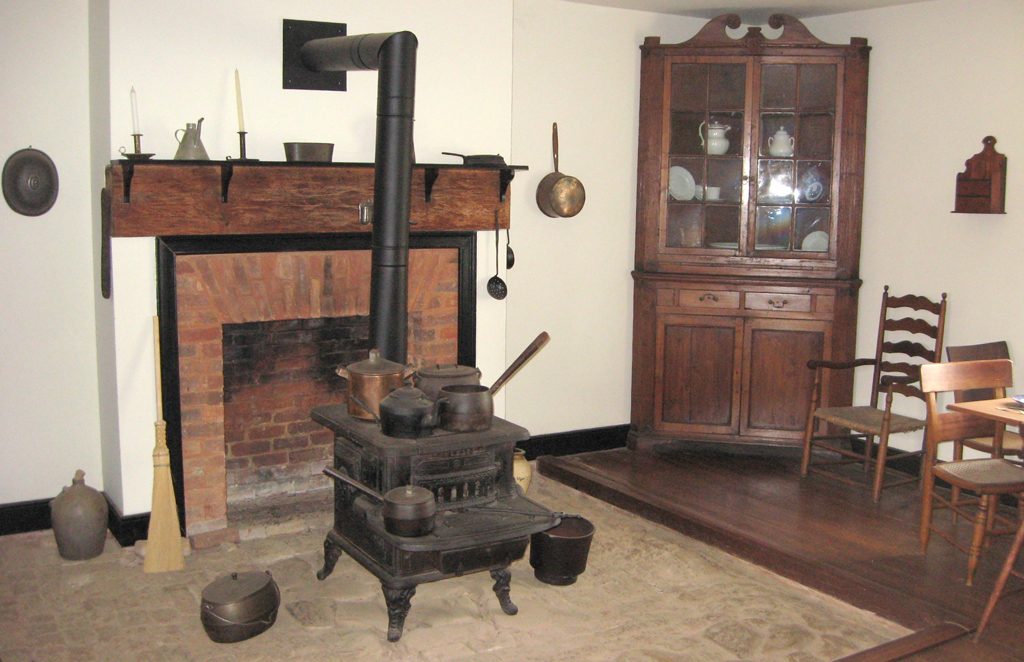
Kitchen in the McLean House
